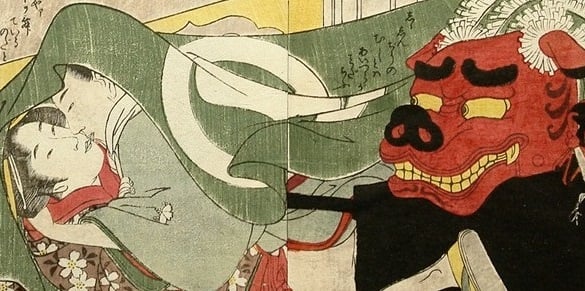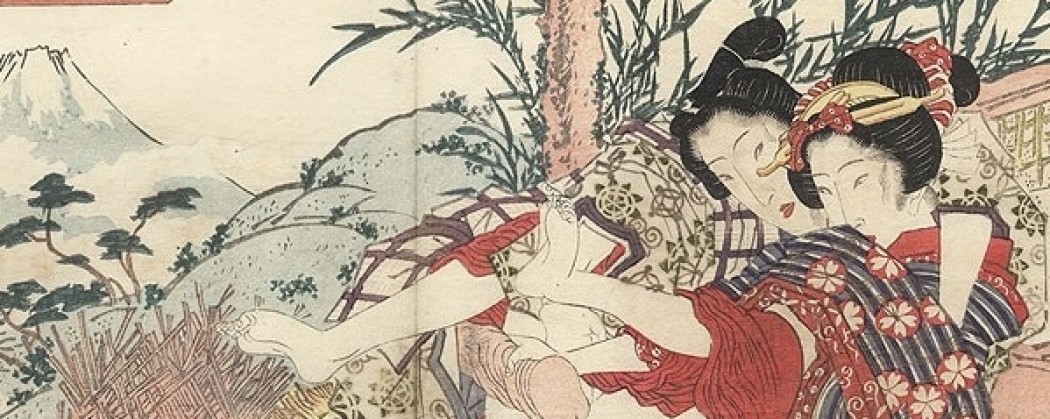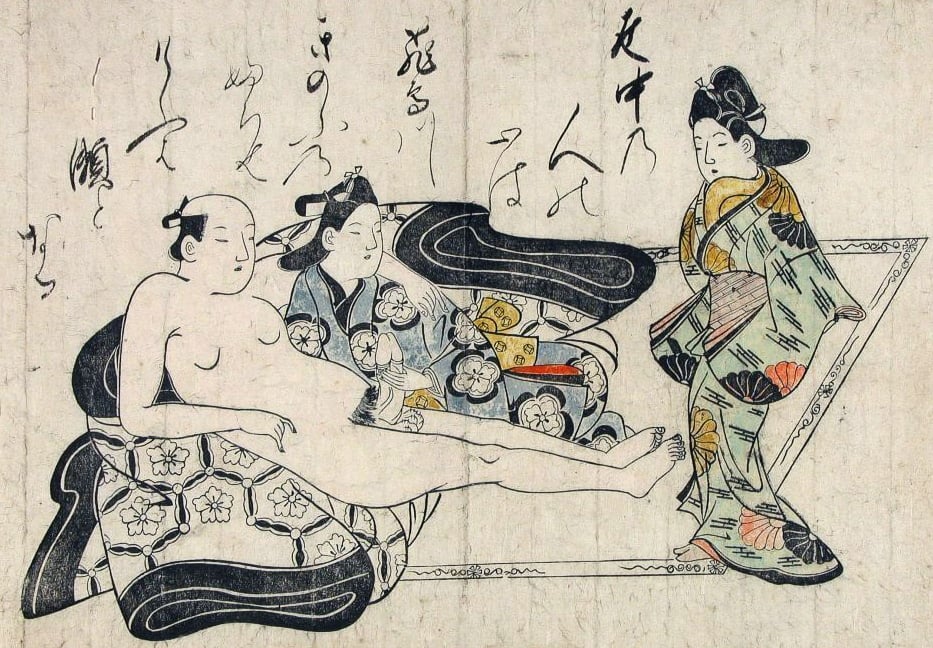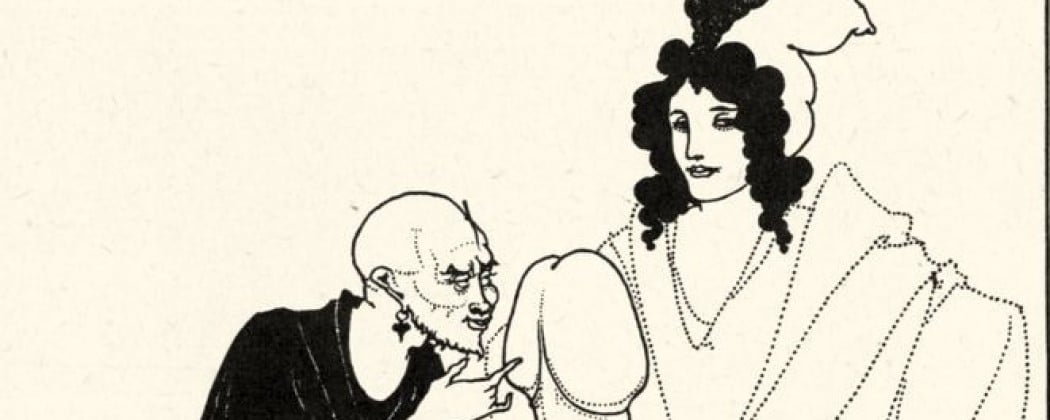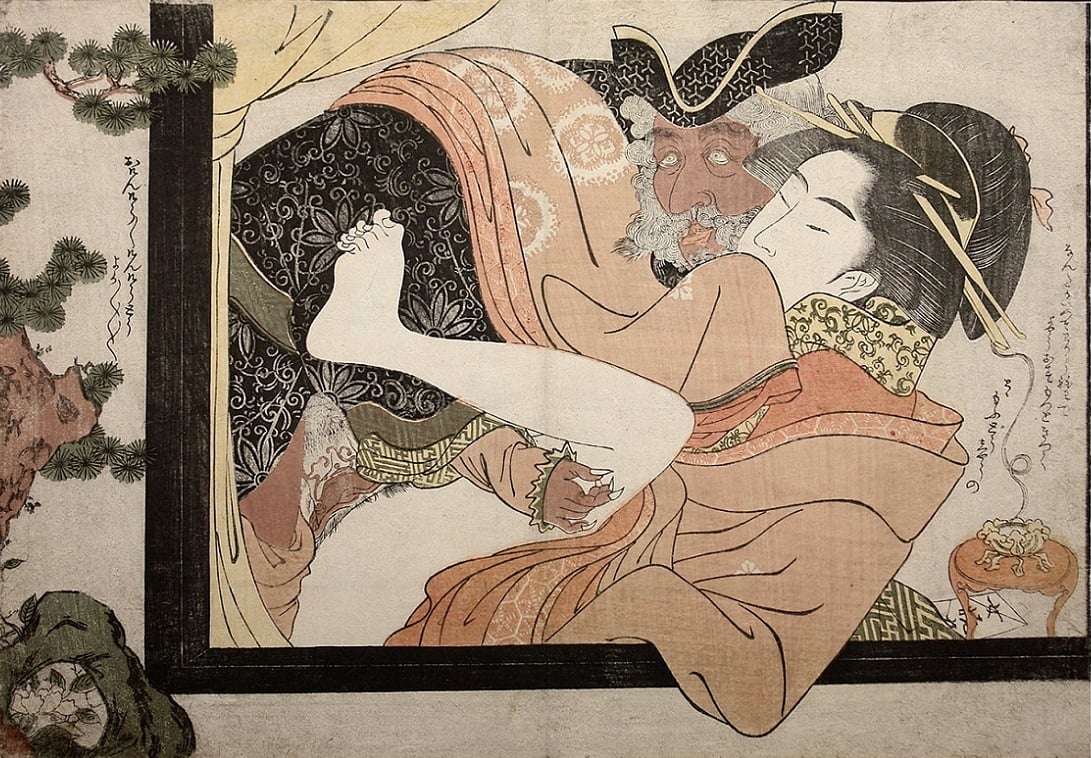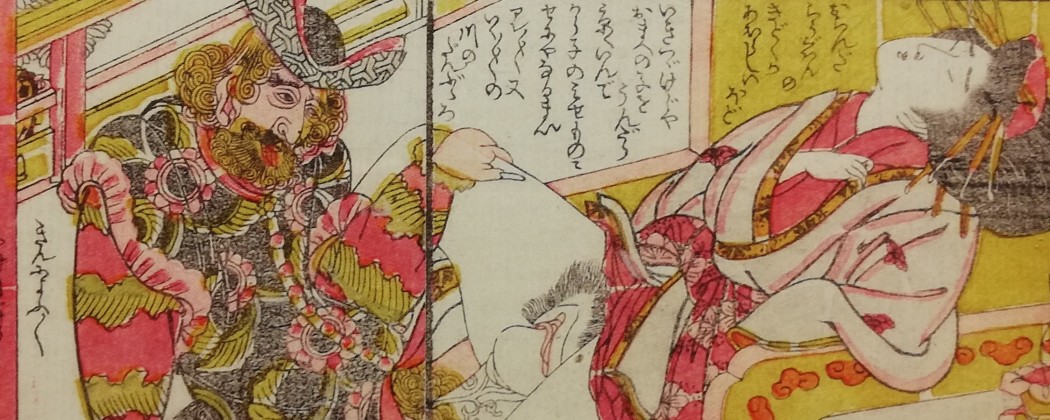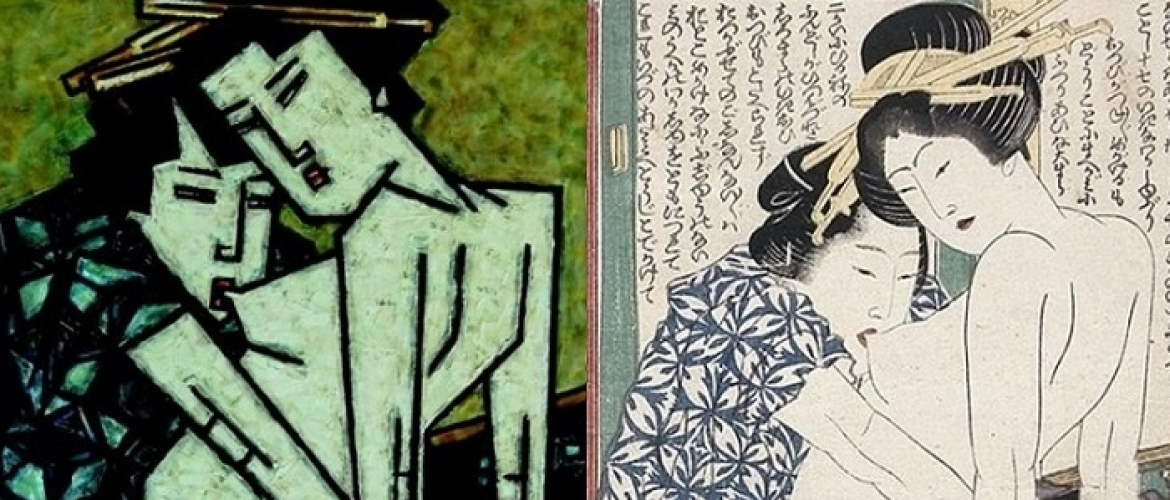
A while ago I sold a series of nice shunga pieces to a New York art collector and avid shunga devotee. He recently told me a fulfilling story about how he took a slew of the prints he purchased from us over to a befriended artist he visited. They looked through at least 50 works, before he took them home.

Fig.1. ‘Peeking woman‘ (c.1790s) from the series ‘Picture Book: The Laughable Erotic Shellfish (Ehon warai ga)‘ by Gessai Gabimaru
Working With Ceramics
A couple of days later he stopped by again, and she showed him a set of vases she’d decorated from memory. He recognized it immediately as the Eishi* piece (see Fig.1.), which was also among his favorites as well. The befriended artist was Betty Woodman (1930), the acclaimed artist working with ceramics, and you can see her vases that were inspired by Eishi in Fig.2. Striking is her delight in its patterns.

Fig.2. Ceramic vases (2016) by Betty Woodman (1930). Inspired by an Old Ukiyo-e Shunga Master from the Eishi school (see Fig.1.).
Betty Woodman Ceramics Exhibition at the Max Protech Gallery, New York
Click HERE to discover more designs from the above shunga series!
Click here for more info on Betty Woodman Ceramics
* I recently came across new information concerning the series of the above erotic design. It is designed by Gessai Gabimaru (1789-1834) and the series is called ‘Picture Book: The Laughable Erotic Shellfish (Ehon warai gai)’, c.1796. He most probably was a student of either Chobunsai Eishi or Kitagawa Utamaro.
It is unknown if he has designed single-sheet prints, but created many book illustrations of a resourcefully wide range of subjects. Therefore it is surprising that no publisher managed to persuade him to turn his talent to single-sheet prints. He made books and paintings portraying beautiful women in the ukiyo-e style. At the same time Gabimaru designed works that are more Kano style than ukiyo-e.
It was in the shunga genre that he reallly made his mark. He shows a meticulous handling of erotic scenes that is curiously ominous of Meiji artists’ shunga. Eishi was one of those artists of the Kansei period who desired refinement by elongating the human figures. Gabimaru mimicked him in this respect, presenting forms of an undoubtedly mannerist delicacy, particularly accentuated by the high crowning ballon of hair that was fashionable during his period of activity.



